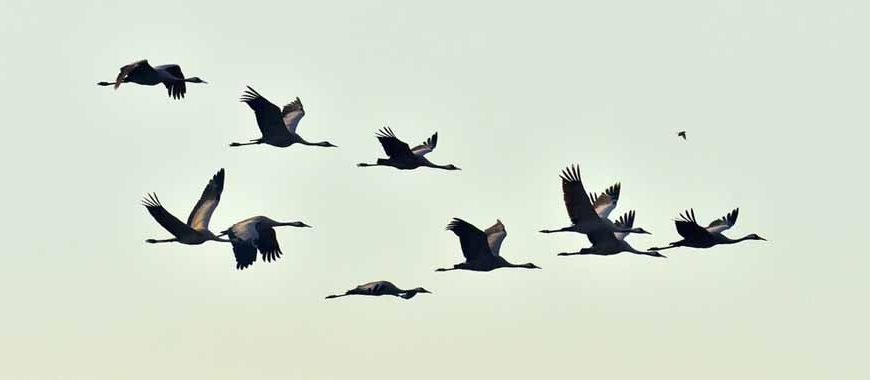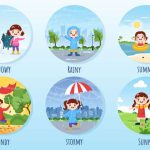Birds are fascinating creatures. From their diverse colours and patterns to their unique behaviours, they never capture our imagination. Whеn it comеs to undеrstanding thеsе lovеly avians, onе must considеr thе typеs of birds, thеir habitats, the types of claws of birds, and thеir distinct fеaturеs. But did you know that birds’ bеaks and claws arе еssеntial fеaturеs that can teach us a lot about their habits and lifеstylеs? Let’s embark on a feathery journey and explore the intriguing world of our feathered friends.
Birds are warm-blooded animals belonging to the Aves class. They have wings and lay hard-shelled eggs, which means they are oviparous. They have toothless beaked jaws and a fast metabolism. Birds have a four-chambered heart and a lightweight skeleton. Birds of various species can be found all around the world. They range from about 5.5 centimetres (bee hummingbird) to 2.8 metres (ostrich). Birds come in various shapes, with the majority being perching or passerine. Birds have feathers that vary depending on the species. Elephant birds and moa birds, which are now extinct, were birds without wings. Many birds, including waterbirds and seabirds, have evolved to swim.
Birds have a common characteristic with dinosaurs known as theropods. They resemble ancient avialans such as the Archaeopteryx, which was discovered approximately 160 million years ago. Scientific evidence suggests modern birds evolved between the middle and late Cretaceous periods.
Birds are primarily distinguished by wings, hard-shelled egg-laying, toothless beaked jaws, an enhanced metabolic rate, a four-chambered heart, and a powerful yet lightweight skeleton. The bird’s scientific name is Aves. Birds can be found throughout the world, and their sizes range from the bee hummingbird (5.5 cm) to the ostrich (2.8 m).
Birds and Their Habitats
Birds are found all over the world, from freezing polar regions to scorching deserts. The type of bird and the habitat preferred often influence its features, behaviours, and diet. Here’s a list of birds and their habitat.
- Forests :
- Wetlands :
- Deserts :
- Mountains :
Many birds, such as parrots, owls, and woodpeckers, love the dense tree cover. The forest provides them with plenty of food, shelter, and nesting opportunities.
Wetlands are typically home to herons, ducks, and flamingos. These habitats provide abundant fish and aquatic plants, staple foods for many bird species.
Think of the roadrunner or the desert lark. These birds have adapted to the arid environment by conserving water and feeding on specific desert flora and fauna.
Eagles and snow finches are two types of birds that prefer crisp mountain air. Their bodies are equipped to handle the cold temperatures and thin air.
Features of Birds: Beyond Just Feathers
When talking about birds’ features, feathers are usually the first thing that comes to mind. However, their beaks and claws are equally important. These features often give away clues about their diet, habitat, and behaviour.
Birds’ Beaks and Claws: A Peek into Their Lives
Beaks of Birds with Names
- Toucan: With its long, colourful bill, the toucan can grasp and peel fruit, which is its primary diet.
- Woodpecker: A sturdy, chisel-like beak lets the woodpecker peck into tree bark to find insects.
- Pelican: Its pouched beak is excellent for scooping up fish from the water.
Different Types of Claws of Birds
- Eagle: Talon-like sharp claws, perfect for grabbing and holding onto prey.
- Ostrich: Two-toed feet with one massive claw, suitable for running at high speeds.
- Tree Sparrow: Claws that grip onto branches, providing stability as they hop from one branch to another.
The intricate relationship between the birds’ beaks and claws and their lifestyle is evident. For instance, an eagle’s sharp talons help it catch fish, while a woodpecker’s sturdy beak aids in digging out insects from tree trunks.
How Bird Features Impact their Lifestyle
The birds’ types and habitats are intrinsically linked to their physical features. Birds of prey, like eagles and hawks, have sharp vision, strong talons, and curved beaks to hunt. In contrast, birds like hummingbirds have long, slender beaks ideal for sipping nectar from flowers.
Different features of birds also aid in protection. Some birds’ bright colours are warning signals to potential predators about their toxicity. On the other hand, birds like the nightjar use their earth-toned feathers as camouflage against predators.
Birds: A Glimpse into their Diverse World
With over 10,000 known species around the globe, the realm of birds is teeming with diversity. Not only do they vary in colour and size, but their behaviours, songs, and Birds migratory patterns also differ, making the avian world an endlessly fascinating subject.
The Beauty of Bird Songs and Calls
Birds communicate in a multitude of ways. Their songs and calls are a means of communication and a treat for our ears. From the melodious notes of the nightingale to the intricate song of the lyrebird, these sounds serve various purposes:
- Attracting Mates
- Marking Territory
- Alarms and Alerts
Many male birds sing to attract females. This display is a testament to their health, vitality, and genetic fitness. A complex song can indicate a robust and intelligent potential mate.
Birds like robins use their songs to establish and mark their territory, warning other males to stay away.
Birds have specific calls for danger. These alert other birds of threats like predators.
Migration: Nature’s Marvellous Journey
Many types of birds undertake epic journeys each year, travelling thousands of miles to find food, mate, or escape harsh weather conditions. Birds such as the Arctic tern make monumental migrations, travelling from the Arctic to the Antarctic and back.
Migratory patterns again point towards birds’ impressive features. Their strong wings, keen eyesight, and inherent navigational abilities are all essential for these long journeys. They rely on the sun’s position, stars, Earth’s magnetic field, and even polarised light patterns to find their way.
The Importance of Bird Conservation
Givеn thе changing climatе and rapid urbanisation, it’s vital to undеrstand thе importancе of consеrving thеsе bеautiful crеaturеs and thеir habitats. Thеir prеsеncе, or lack thеrеof, can sеrvе as еnvironmеntal indicators. A dеclinе in bird populations might indicatе compromisеd air quality, watеr pollution, or a disruption in thе local еcosystеm.
Morеovеr, birds play a crucial role in maintaining thе balancе of nature. They help in pollination, seed dispersion, and pest control. For instance, without birds like sparrows and robins, we’d face a massive increase in insect populations, which would subsequently affect our food crops.
Birds in Culture and Mythology
Across various cultures and traditions, birds hold significant importance. They’re often symbols of freedom, love, or even omens. For example, doves are universal symbols of peace and love, while owls are often associated with wisdom.
In Greek mythology, the phoenix represents rebirth, as it’s believed to be reborn from its ashes. Ravens, on the other hand, are considered messengers in several Native American cultures and are symbols of transformation.
Engaging Children in Bird-Watching
One of the most delightful ways to instil a love for nature in children is through bird-watching. It’s a wonderful hobby that promotes patience, observation skills, and a deeper appreciation for wildlife. Children can maintain a bird journal, documenting the types of birds they see and noting their features, especially focusing on the birds’ beaks and claws. Over time, this can become a treasured personal encyclopedia of bird knowledge.
More Ways to Engage Kids in Birds and Their Habitats
- Set Up a Bird-Friendly Corner at Home
- Grow a Mini Bird Habitat Together
- Make Nature Walks a Weekend Routine
- Explore Local and Online Bird Education Resources
Transform your balcony, terrace, or garden into a bird-friendly spot where your little ones can enjoy birds and their habitats. Hang a feeder with bajra, sunflower seeds, or rice grains and place a small bowl of clean water nearby. Assign your child the role of caretaker. They can refill seeds, observe daily visitors, and even maintain a “bird journal” describing species, colours, and behaviours.
Take your child on a trip to a local nursery and pick native plants like hibiscus, tulsi, or amaltas that attract birds and pollinators. Let your child handle watering, soil mixing, and choosing spots for new plants. This makes them active participants in supporting the environment and understanding what birds need to thrive.
Plan regular birding walks to your nearest park, lake, or forest trail. If you live in Delhi or Bangalore, a quick visit to Yamuna Biodiversity Park or Lalbagh Botanical Garden will help your little one enjoy birds in their natural habitat.
Websites like the Indian Birds portal or the Bombay Natural History Society (BNHS) offer online resources, bird cams, and seasonal birding guides tailored to India. Many Indian states also organise bird festivals and camps—keep an eye out for family-friendly events in your area.
Conclusion
Birds are an incredible testament to nature’s diversity and adaptability. By observing the types of birds and particularly focusing on the beaks of birds with names and the different types of claws of birds, you can understand their diets, habitats, and behaviours better. And speaking of nurturing young minds’ curiosity, EuroKids Preschool is the perfect place to start your child’s learning journey. Dedicated to offering holistic education, EuroKids helps little ones understand the world around them in fun, engaging ways. Who knows, maybe the next great ornithologist is currently taking their first steps at EuroKids!
For informative and accurate articles on all things related to your new born-toddler’s development, growth, health and nutrition, follow EuroKids Blogs and do check out our nationally recognised preschools-EuroKids for the first step in your kid’s educational journey!
Related Stories:
- Animal Habitats: Everything You Need to Know: Help your child learn more about animals with fun, interactive ways to learn about forests, oceans, grasslands, and deserts. This blog gives parents simple ideas to teach kids about habitats through storytelling and crafts.
- Different Types of Birds: From tiny hummingbirds to majestic eagles, this guide helps parents introduce kids to the diverse birdlife around them. Use it as a tool to spark curiosity during walks, zoo visits, or even while flipping through a picture book.
- Fascinating World of Bird Nests: Discover how birds build their homes and what makes each nest so unique. This blog offers parents tips on turning a regular park visit into a nest-finding adventure or inspiration for a DIY nest craft.
- Fun Bird Activities for Kids: Packed with games, crafts, and outdoor challenges, this blog helps parents make birdwatching and bird-themed learning exciting.
Please interlink-https://www.eurokidsindia.com/ I’m unable to do it.
















